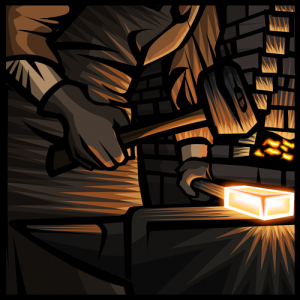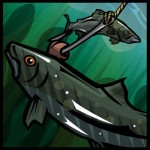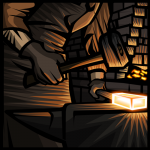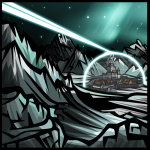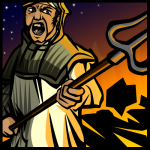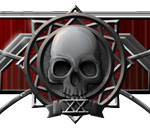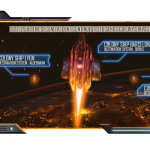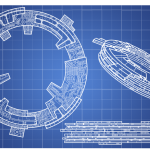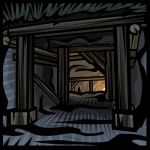Hello everyone!
Category: Game Design
14OCT14 – Prestige Scrolls
PRESTIGE SCROLLS
- Prestige Scrap: 75 Prestige, 75 Mana, 75 Research, 1 Giant Rat Heart, 1 Pyrestone, 1 Sharproot
- Prestige Parchment: 200 Prestige, 200 Mana, 200 Research, 1 Wild Dog Heart, 1 Claristrine, 1 Silverthorn
- Prestige Page: 500 Prestige, 500 Mana, 500 Research, 1 Wolf Heart, 1 Deepsilver, 1 Furzion Seedpod
- Prestige Scroll: 850 Prestige, 850 Mana, 850 Research, 1 Brown Bear Heart, 1 Rainbowstone, 1 Brownback Moss
- Prestige Codex: 1200 Prestige, 1200 Mana, 1200 Research, 1 Giant Scuttler Heart, 1 Trove, 1 Suntree Haft
- Prestige Book: 1850 Prestige, 1850 Mana, 1850 Research, 1 Scritcher Heart, 1 Svelaugh Sand, 1 Vistrok Flower
- Prestige Tome: 3250 Prestige, 3250 Mana, 3250 Research, 1 Scaled Charger Heart, 1 Earthblood, 1 Ironstem Root

You can also see the server’s daily heart beat or ebb and flow of player demands (this is over a week). The later half of the graph increases in requests per second as you (the players) activate the Heart of Corruption and then in response start sending thousands upon thousands of missions to it and the corrupted temples.
CHANGES TO IMAGE, CSS & SCRIPT HOSTING


MAIL NEXT & PREVIOUS ITEMS

The next and previous buttons are category aware, so if you are in a subcategory e.g. sent or trade they will just navigate you through available mails in that subcategory.
Players can pass their Combat API key to third parties (such as alliance techies, or killboard website operators) and these third parties can then query this page on behalf of the player, and retrieve the individual combat reports for every combat this player has been involved in.
ISSUING & REVOKING YOUR COMBAT API KEY
Go to your Account & Preferences page and click on the API submenu:

Account sitters can generate and/or revoke API keys.
USING THE API KEY TO GET AN XML LIST OF AVAILABLE COMBAT REPORTS – A PROGRAMMERS’ GUIDEIf you’re not a programmer, then the following is probably not relevant, and you can skip over the next couple of sections!
[Server Name]–[KeyType]–[Key]
This helps you identify which server to query (we currently only have elgea) and what page to query with the key.
A sample full combat API key for elgea might look like this:
elgea-COMRP-AQAAABoolkA8l0qQ7kL5Vpxmk-LwCjrv0qh5f9uB6M10saMBnAi01_0IiV4a-pnxWDUF5UcAhtw1SNQ2n0XGbgvb6gw=
This identifies this key as being good for pulling data from Server [elgea] for Combat Reports [COMRP], and the remainder of the key is an encrypted piece of data that identifies the player to us (twinned with the rights he has given to this key).
To query a key for the first time, call the following page:
https://elgea.illyriad.co.uk/external/combatreportsapi/[insert player’s full Combat API Key including the server and keytype here]
and so, using the example above, your query would be:
https://elgea.illyriad.co.uk/external/combatreportsapi/elgea-COMRP-AQAAABoolkA8l0qQ7kL5Vpxmk-LwCjrv0qh5f9uB6M10saMBnAi01_0IiV4a-pnxWDUF5UcAhtw1SNQ2n0XGbgvb6gw=
WHAT DOES THE PAGE RETURN?
<combateventsapi> <server>
</server> <player id="1"/><playerapikey id="elgea-COMRP-AQAAABoolkA8l0qQ7kL5Vpxmk-LwCjrv0qh5f9uB6M10saMBnAi01_ 0IiV4a-pnxWDUF5UcAhtw1SNQ2n0XGbgvb6gw="/> <combatevents>
</combatevents> |
Breaking it down, you have:
- The standard Server Identification snippet, followed by
- The PlayerID who this Key belongs to, and the exact key you just used
- A list of combat events that this player has been involved in, along with the <personalcombatkey> identifier so you can then go off and query the specific event for the full details, using:
https://elgea.illyriad.co.uk/external/combatreport/[insert <personalcombatkey> here]
HOW TO CHOOSE WHAT EVENTS YOU NEED TO QUERY
1. You may already have the report from another player
Within:
<uniquecombatidentifier>
</uniquecombatidentifier> |
IF
- You already have a combat report with this <server id> and
- You already have a combat report with this <combatguid id> and
- You already have a combat report with this <troopmovementevent id>
THEN
IF
- This new report has a less than or equal to ( <= ) <datacomplete id> than the one you currently have:
WHEN TRUE (YES, YOU HAVE THIS “NEW” REPORT ALREADY AND THE VERSION YOU HAVE IS AS GOOD AS, OR BETTER THAN, THE NEW REPORT) THEN
- Don’t query this report – you already have everything you need
WHEN FALSE (NO, THIS “NEW” REPORT HAS MORE ACCURATE DATA THAN THE REPORT YOU CURRENTLY HAVE) THEN
- Query this report using the <personalcombatkey id> and replace your existing report with this one
ELSE
- This is a new report and you should import it
The reason we have the datacomplete flag is because different players can get slightly different versions of the same combat report (eg “Your army was completely destroyed and you heard nothing of its’ fate” vs “You completely whupped that guy, here’s the report”).
2. You don’t need to query the complete player history every time, to decide what’s new
Obviously we don’t want you to be querying a complete player history every time you pull the API key.
So there is an additional parameter we’d like you to use when you subsequently query view_combat_reports_api.asp – this parameter is called [since]. [since] is based on the actual combat occurrence date, not the date that the army was originally sent, so it should be a historic record.
This should be set to the most recent <combatoccurrencedate> for the <player ID> whose key you are using.
If you don’t have any data for this player so far, then please do not provide the [since] parameter.
Because there is a chance that you might have two combat events from the same player occurring at the same second, we will return the event(s) you already have at that datetime stamp, so please be prepared to ignore the first couple of events returned – as you may already have them (see above for how to decide).
The [since] parameter is in the same format it was provided in originally in the <combatoccurrencedate>field of the last report you have from this player, such as: 2014-08-06T03:09:10
The Date Time format is YYYY-MM-DDTHH:MM:SS
So, a first API Key query might look like this:
… and a subsequent one might look like this:
… which will only return those combat events related to the player since (and including) the event that occurred on the [since] timestamp.
HOW OFTEN CAN I QUERY A PLAYER’S API KEY?
For the purposes of development, we haven’t yet set a limit.
However, we will probably impose a limit for a particular key query (from the same querying source) at some point in the future, simply to preserve server resources and bandwidth. It all rather depends on how you player-programmers choose to use the API key system!
GM Cerberus: Behind Illyriad’s Art
We’ve always loved the artwork inside of Illyriad and now, Age of Ascent, the upcoming MMO shooter we’ve been working on. So, who makes all of those pretty pictures, graphics and icons that you see while playing? It’s GM Cerberus, that’s who. We wanted to let him talk about himself so that you, the player, can get to know this superbly creative individual who pops into chat once in a while.
What got you started in art?
I’ve loved creating art from a very young age, I was fortunate enough to be raised by a family of artists; my mother being a singer/writer and my grandmother being a painter. They helped and encouraged me to cultivate my talents. What really got me into art, though, was video games. I loved drawing Samus from Metroid and Mega Man bosses as a kid, and I would occasionally get in trouble in grade school for doodling when I should have been working on school work.
What is it like making art for the specifics of a video game? How is it different than other projects?
It has been a learning experience from the get-go. There are a lot of technical aspects when creating digital art that you don’t have to account for in physical media. Not everyone who views the work I create is viewing it at the same settings I am, for example, there are different resolutions and browsers to take into account. Heck, some people’s monitors aren’t even correctly color calibrated. One of the biggest things, however, is that i’m creating artwork not just for form but for function. Everything I create has a purpose in some game mechanic, and seeing it all in place and functional in-game brings on a sense of self-satisfaction unrivaled by any other project I’ve ever undertaken.
Do you have an estimate of how many pieces of art you’ve made for Illyriad? How about for Age of Ascent so far?
I’ve done upwards of 250-300 “large” pieces that players can view in the tech tree in Illyriad and hundreds of other miscellaneous graphics and doodads that I can’t even begin to put a number on. It would be difficult to put a number on Age of Ascent as well, but I’d be safe in saying it’s over 100 pieces. These numbers can be misleading however, as I’m including something as small as a scout unit or afterburner icon.
Do you have a preference of working on fantasy or sci-fi stuff?
I’m really torn on this, so much that I feel like two different artists when I’m working on the styles. With my fantasy work I feel more at liberty to have them look hand illustrated where with science fiction I feel the need for precision and almost have the work be Trompe l’oeil. With Illyriad most of my work is done using a form of vector illustration and some freehand with a tablet, and on Age of Ascent it’s a lot of photo-manipulation illustration and a bit of drafting. I can’t claim favorites honestly, I’m fortunate enough to have the freedom to explore so many different styles that I love them all.
What is your process like? Do you sketch? Work on paper or all digital?
My process is very traditional in the sense that I start with a very basic sketch to act as a skeleton for the piece, and work up from there. My vector illustrations, for example: I begin by getting a very basic sketch, sometimes I refer to photos I take and chop up to insure I get my angles and proportions correctly, and then I create the dark contour lines. After the contour is complete I move to coloration and then shading to give the piece depth and light. For work with Illyriad and Age of Ascent I don’t really touch paper, everything can be done digitally and it’s very convenient to not have to scan in sketches or attempt to translate what I created on paper to digital media.
How do you create so many pieces of art while still maintaining your sanity?
Who said anything about me being sane? I very much doubt my sanity and it spirals downward daily. Seriously though, as I said before I am fortunate enough to have the privilege of being able to work on a myriad different styles. If I get burnt out on making logos for corporations in Age of Ascent I can switch over to creating freehand military units, isometric machines, blueprints, or vector illustrations. Variety is what keeps me sane, and I have lots of it.
Thanks to Cerberus for taking the time to talk with the blog. Now, get back to work! Those drawings won’t draw themselves!
The Broken Lands Map
Here’s the Broken Lands map for your delectation.
There will be approximately 300 squares of open ocean between the southern tip of Stormstone on Elgea, and the Northern-most tip of the Broken Lands.
This map does not currently show shallow/tidal/ocean waters; I’ll put this on a later version.
The large Western landmass with the border round it is the PvP-free protected zone.
Regards,
SC

Click the map for the large version
The Champions Return: Designing a Tournament
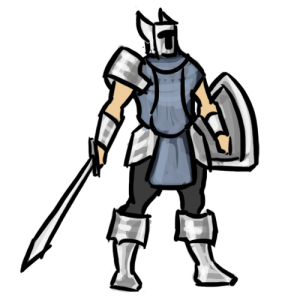 Producing a web game should be easy, shouldn’t it? This is the internet. We can measure everything.
Producing a web game should be easy, shouldn’t it? This is the internet. We can measure everything.
We don’t have to guess how our game will be received after launch – it has already been launched, and so on the internet we can try something, measure the results, and then build on that, using the data as our guide. Iteration is the key, and data will unlock the secrets of the players’ deepest desires! Apparently.
That’s a lovely theory, but in practice it just doesn’t work like that.
For one thing, what data do we look at? Do we look at the quantity of forum posts and chat relating to a tournament to see how much interest it sparked? Or do we look at this qualitatively, reading everything the players say to see what they like and don’t like? Or do we measure increases in log-ins to see if people are playing more often as a result of the tournament? Or do we measure the number of military units committed to a tournament, using troops sent as a proxy for interest in the tournament? Or do we look at Prestige spent, seeing if people spend more during a tournament?
The reality is that we measure all of those things. And once we have the data… it is all completely contradictory.
For example, based on what players have said, qualitatively, the most popular tournament we ever ran was the Undead Horde tournament in spring 2012. We arranged the players in leagues based on size and had them compete to seek out and fight off waves of undead – and anecdotally, it seems that everyone loved it. But in reality the data contradicts that. It didn’t get people to log in more, people weren’t interested enough to spend Prestige – all of the statistics say that it was our least engaging tournament.
Nor can we just pick one data point and run with that. We can’t say “Prestige spend is the one true measure”, because we want everyone to love the game, whether they use Prestige or not. We can’t say “what matters is how often people log in”, because then grinding tournaments look like a success, but might just irritate people (such as with the Bloodthirst for Knowledge tournament back in 2011).
And when we’ve taken all of that insight on board we cannot, as the theory would suggest, just repeat and tweak a winning formula – because our players will get bored with the same old thing.
In reality we can learn from what we’ve tried in the past, but the focus has to be on building something new, based on a set of principles as much as on the data.
So, with the current Champions Return tournament we have taken on board what the players have said and done in past tournaments, but our starting point had to be more theoretical.
In this case we started with a question – a question which actually crops up in every tournament, whether it is spoken or unspoken. “How do we give players on all levels something to do in this tournament?”
Illyriad is an open world, where fledgling rulers and mighty veterans rub shoulders on the same map. We need tournaments where the big players can feel challenged – where their huge, carefully optimised cities can really show their worth. But we also need new players, with just a couple of settlements and few hundred basic troops, to be able to get involved.
In the case of The Champions Return, we’ve done this by providing three types of overlapping objectives.
For the huge Alliances, where dozens of big players are chafing to show their superiority, there is a global leaderboard. There can be, as the movie said, only one. And the glorious victor gets a permanent statue on the game map memorialising their achievement.
For the medium sized Alliances, there are also regional victories. So, if an Alliance has no hope of defeating all comers, globally, it can still prove itself king of its own local hill.
Thirdly, for individual players, there are medals to be won – and although these are for individual achievements they can be won with the help of larger players. Even a tiny player could, in cooperation with larger alliance mates, win a medal.
This allows people to pick their own difficulty level. For example, a medium sized Alliance might say “we want to win our local region, and make sure that all of our members get a medal”. A small alliance might decide that they’ll be delighted if just one of them can pick up a medal. A really big alliance might disdain the medals, and focus only on the big prize – only three Alliances have ever won an Illyriad tournament, so this is a worthy challenge for ambitious players.
And of course all of these goals over-lap. A big Alliance seeking global victory will be competing locally with guys who are just fighting for their regions. A small player who just wants a medal can usefully join and aid even a veteran Alliance – they help him get his medal and his win counts towards their score.
So, the current tournament should allow people to pick their own goals, and win glory appropriate to their ability and strength.
We will look at the data in the end, of course. But we can’t start from the numbers and somehow hope that a tournament can be created from a mathematical model. We have to start, as we always do, with thinking about building structures that players can have fun exploring.
Announcement: Expansion Name Change

Player feedback is one of the most important parts of the continued development of Illyriad. The development team and I have been listening closely since the announcement of the game’s upcoming expansion. While the Broken Lands will give players an entirely new continent, new faction quests and lots more fun to experience, something was lacking. What we needed was a real “hook” that would connect with our players and the things they truly care about. We need a truly innovative, modern solution that everyone will love.
And what does everyone love, more than bacon? Not much. I mean, really. It’s bacon.
I mean, ya know, bacon. Need I say more?
GM Luna
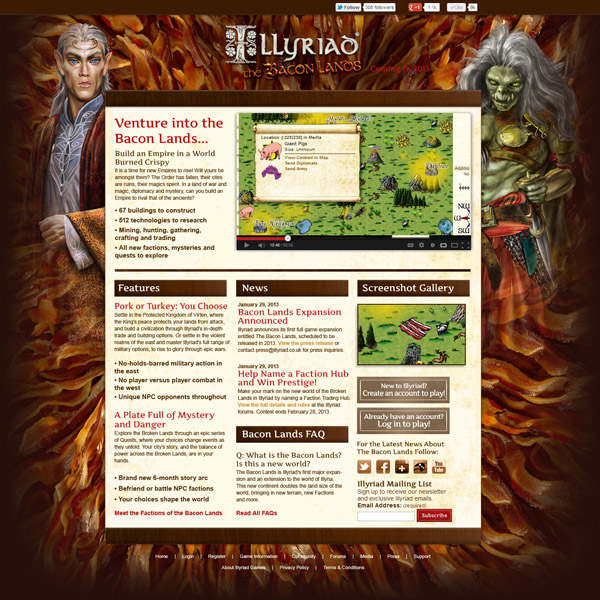
Crunching the Numbers on Unit Strength
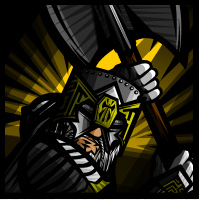 When the statistics for Illyriad’s troops were first created, Elgea was an empty place. No cities, no players – just an empty map, and the hope that in time many players would come to this new land and start building their empires.
When the statistics for Illyriad’s troops were first created, Elgea was an empty place. No cities, no players – just an empty map, and the hope that in time many players would come to this new land and start building their empires.
So, when the statistics were created, the vision was for a world where people were building up their towns, and maybe vying with each other and skirmishing as they went. And you can see that from the way that the troops stats are balanced: the toughest units take time to unlock, and then make hefty demands on a town’s production capacity, but in the end a few super-units are the out-and-out favourites.
To understand why these super-units rule the battlefields of Elgea, it’s necessary to look past the apparent stats (movement, carrying capacity, defence against bows, defence against spears and so on), and look at two vital stats which are not actually listed. To many of Illyriad’s more analytical players this is no revelation – some people have built spreadsheets to calculate these numbers – but to more casual players these numbers may not be obvious, so let me explain….
The key numbers are strength relative to gold upkeep, and strength relative to time required to build.
Strength/gold is the power of your army, relative to the amount that you can afford to spend on their upkeep. During peacetime this is a vital number, as it defines the power that you can maintain without running a financial loss.
Strength/second determines the speed with which you can build up again if you suffer losses. In a protracted war or a tournament this is key, as it determines how fast you can bounce back, and determines your staying power in a war of attrition.
At the moment, the highest attack/gold and attack/second stats are both the human Knight – with 16.25 attack/gold and 0.0406 attack/second (unmodified by Barracks or Sov). Meanwhile the best defence/gold and defence/second stats are those of the Elven Trueshot. And this is why many players say that the humans and elves are the most powerful races in Illyriad, and why most human players build Knights and elves build Trueshots.
To be clear, there are other units that are worth building. When we introduced equipment we made sure that Elite dwarven infantry became fearsome (correctly equipped elite Stalwarts have the edge over well equipped Elite Knights, in terms of attack/upkeep). Basic cavalry – especially the elven Swiftsteed – are handy for getting to a fight fast. Orcs have the unit with the best defence against cavalry, their Guardsman. But the overwhelming choice for most players is to go with the weight-of-numbers favourites, the Knights and Trueshots.
In a game where most people haven’t yet got the researches or Barracks or resources to build these units, that is fine. But now that Illyriad is well established, for the most powerful players concerns over researches and resources are a thing of the past. They have the researches they need, and have set up their cities to pump out the resources that are required.
This is, if not actually a problem, not as interesting as it could be.
We’ve always said that people should be able to pick their own path in Illyriad. And it in’t so satisfying if this becomes, “well, you can pick your own path, but the only military path that really makes sense is to build Knights!”
So, the time has come to rework some of the units stats.
Now, we have not taken anything away from people – no unit is going to become weaker. And we haven’t changed any combat strengths, nor change the resources required to recruit troops. So, peoples’ build strategies will still work just fine.
But we have changed one thing – and we have changed it radically.
We’ve reduced the build times for some of the weaker units. Knights, Trueshots, Marshals, Death Packs and their ilk will be unaffected, but many of the weaker units are faster to build… and in some cases they are much, much faster.
Of course Knights will still have the supreme attack/gold ratio. And Trueshots will still have the best defence/gold. But completely different units now have the best strengths per time. So, with a reduced build time dwarf Stalwarts now have a better attack/second ratio (0.0438) than Knights (0.0406), and the best unit for overall defence/second will now not be the fearsome Trueshot (0.0273) but the humble orc’s basic spearman (0.0291).
And because the changes are quite detailed, we’ve ensured that most of the units available to a player have a single overall advantage.
Thus, for an elven player, the best defence/gold is the Trueshot and the best attack/gold is the Marshal, the Swiftsteed provides the fastest movement speed, the Phalanx has the best defence/time if you’re looking for defence versus cavalry, but the Sentinel gives the best defence/time against other unit types, and if you want average strength/time then you should go for Wardancers…. So, no 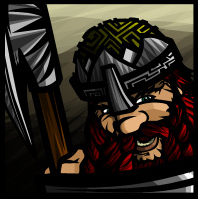 longer is the Trueshot the inevitable choice for maxed-out military Elves.
longer is the Trueshot the inevitable choice for maxed-out military Elves.
And the picture for other races is similar. Orc Fangs and Cohorts suddenly become attractive, dwarves don’t just benefit from faster swordsman production, and humans may start to be tempted by Men-at-Arms and even Archers.
These production speed changes will give a much broader range of options for all races, and should provide much greater strategic choice in a game where power now resides with fully formed cities.
These changes are now live.
Choosing a Name for the Tower of Evil
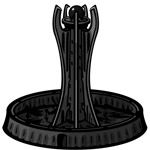 As we continue working on the Broken Lands expansion for Illyriad, it has been really nice to take some time out to look at all the names suggested by Illy’s players for the dark tower of evil at the heart of the Broken Lands.
As we continue working on the Broken Lands expansion for Illyriad, it has been really nice to take some time out to look at all the names suggested by Illy’s players for the dark tower of evil at the heart of the Broken Lands.
And after much deliberation…
The winner is…
Absolutely not Black Skull Horde.
Sorry, guys. Much as I chuckled to see the relentless march of orc humour on the forum, how ever many times you suggest it, we can’t oblige you. Ultimately, this is going to be the brooding heart of evil for a continent where people will be playing for years, so we have to go with a name that really works in that context. The name has to say something about the world, what has happened historically and what may now happen in play, and it has to resonate with players who may not be familiar with the current Horde’s particular sense of humour.
Likewise, we had to drop a lot of other names that we immediately responded to, emotionally. Sparky Sparky Doom Doom Tower genuinely made me laugh out loud, but sadly we can’t go with that. Likewise, Durcamroth was one of several moving tributes to past players, but we have to go with something that fits the context first and foremost.
Some other suggestions were dropped for a more prosaic reason – language. Anything that (as far as we can tell) translates directly and inappropriately into another language, had to be dropped. This was a shame, as we lost some names that sound really nice to an English-speaker, but we have players here from all around the world and we didn’t really want anyone to be contending in-game with a dark tower of menace that, to them, was named “Grandmother’s Hip” (yes, seriously), or “Dumpster Baby” (or maybe “Dumpster, Baby!”)
This still left us with lots and lots of very cool names to choose from, and I applaud the creativity of our players! Darkhaven Spire, Moonholme, The Sunderspire, Fel-Flame Tower, Kangax Drugis, Spire of Bleak Beginnings, Blacksilver Keep, Doegun… the list of cool names just went on and on.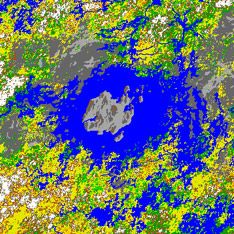
But in the end we decided to go with something that spoke not only of past catastrophe (as the Bleak, Tarnished, and Sundered suggestions did), nor of betrayed hope, but also something which looked to the future – something which hinted at further horrors that might be unleashed on the world – and, of course, on our players!
Even here we had several excellent options to choose from. But in the end, one stood out. Just four letters, full of dark menace, heavy with promise of some future evil – genius in its conciseness: Omen.
Illyriad Dev Chat – Crafting/Harvesting/Trade v2
Below is the video from our dev chat today. GMs Stormcrow, Thundercat and I took some time to talk about the Harvesting, Crafting and Advanced Trade systems that are coming to the game as well as answer some questions from the community.
Towards Trade v2
 Trade is based on the notion that you swap what you do not need or do not want, for something you do need or want. For example, you want a new car and you have more money than you need, so you buy a car from a dealership which has cars but needs money. Or perhaps you are better at playing a certain sport than anyone else on Earth, so you swap your time for vast quantities of money at one of the top clubs (and then, oh, the cars you will buy!)
Trade is based on the notion that you swap what you do not need or do not want, for something you do need or want. For example, you want a new car and you have more money than you need, so you buy a car from a dealership which has cars but needs money. Or perhaps you are better at playing a certain sport than anyone else on Earth, so you swap your time for vast quantities of money at one of the top clubs (and then, oh, the cars you will buy!)
All of this is based on the idea of people needing and wanting different things, and having different things.
In Illyriad today, all settlements can make everything if they choose to do so, so there is nothing that you cannot make for yourself. On the other hand there is nothing that you have that is useless to you. Everything you want, you can get through manufacturing, with little need to trade. As a result, trade in Illyriad today is fairly limited.
But all of that is about to change.
Imagine if you awoke one morning to find that you had, near your towns, a mine and a patch of woodland where you can gather rare gems that are useful in magic. Now you don’t need to cast that many spells that often, so you can easily have more gems than you need. You could stockpile these, but you could also sell them. Now, you may want to defend your new-found resources, and you may want your spearmen to be able to defend well on both mountain (mines) and forest (woods) terrains; so, you may decide that to help your troops do this better you would like to equip them with defensive spears whose manufacture requires a rare metal from the far north.
Now suddenly, it is worth you getting involved in trade. You have something that magic-using cities want, and you would quite like some of that northern metal. And in order to buy these unusual items you will now have access to a specialist market – found at your nearest Faction Hub.
 The result is that you have lots of choices to make. Do you use two building plots in order to gather the herbs and minerals? Do you sacrifice a plot to make those superior spears, or would you rather just pay extra for the finished spears and let someone else do the manufacturing?
The result is that you have lots of choices to make. Do you use two building plots in order to gather the herbs and minerals? Do you sacrifice a plot to make those superior spears, or would you rather just pay extra for the finished spears and let someone else do the manufacturing?
And for the actual trading, do you rely on players who have specialised as middle-men, simply Accepting the sell orders that they have placed in your local Faction Hub, or do you maintain your own specialist trade units in order to access distant Hubs and place your own trade orders?
When all of these extra resources are in, you will still be able to produce everything that you absolutely need. Iron, wood, food, and so on, everything a town requires, will still be produced in your towns. But now, you may find yourself with a shopping list of other things that you want, and you may also find yourself with the ability to gather or manufacture things that you don’t need but other people want.
Different players will react to this differently. You could, if you wish, fill your town with specialist crafting buildings to make troop equipment. You could completely fill your town with gathering buildings (though you’ll want to keep a slot for a market to ship the goods out, and very few people will have access to large enough quantities of resources to get a benefit from that many gathering buildings). And you might consider giving two or more plots over to trade buildings.
Or, of course, you might decide that some or all of your towns have other functions, perhaps preferring to dedicate all your town slots to the advanced magic or military buildings, leaving all the gathering and manufacturing and trading to others. Your choices will depend on the stage of your town’s development, what new resources you happen to have near by, and what style of play you prefer (military, magic, gathering, manufacturing, trade).
The result of different players making different decisions will be that their town buildings will become highly varied, and that their settlements will be producing and consuming different goods. For players who want to trade that means plenty of new opportunities. And for everyone else that means lots of choice in how to build up your cities.

